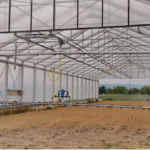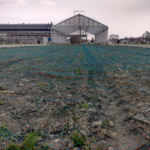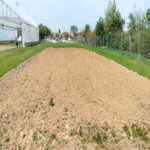11 Rainout-Shelter
Image gallery:
Contact:
Universität für Bodenkultur
UFT1-E2.3.107
Konrad-Lorenz-Straße 24/II
3430 Tulln an der Donau
Department für Nutzpflanzenwissenschaften (DNW)
Gregor-Mendel-Straße 33
1180 Wien
Email: kenny.paul@boku.ac.at
Phone: +43 1 47654 95119
Web: https://boku.ac.at/dnw
Key facts:
Description:
| Name | Rainout Shelter (ROS) |
|---|---|
| Location | BOKU, DNW, UFT, Konrad-Lorenz-Straße 24/II 3430 Tulln an der Donau |
| Category | Automated Greenhouse system |
| Environment | ROS intercept natural precipitation or rainfall, decreasing gravimetric soil moisture, air temperature remains similar to ambient conditions. |
| Sensors | Rainfall humidity sensor, sensors for controlled irrigation and fertigation regimes, and safety alarms. |
| Traits | Above-ground biomass, Drought tolerant, Climate-fit, Grain yield |
| Capacity | The ROS test field area at BOKU, Tulln measures 11m x 34m, allowing for the cultivation of approximately 50 plots of typical size. An open control field of similar size is located parallel to the test field. |
| Limitations | – Temperature fluctuations |
| References | |
| URL | https://projekte.ffg.at/projekt/4015915 |
Rainout shelters (ROS) are typically fixed-location structures that can intercept the majority of natural precipitation, providing an effective tool for investigating the effects of varying precipitation levels on biodiversity and ecosystem functioning. The fully automated rainout shelter at BOKU, Tulln is well-suited for creating drought conditions within the sheltered (test field) area by minimizing artifacts, ensuring predictable rain exclusion, and proving feasible for experimental studies in agricultural field settings. It allows researchers to study how different crop varieties respond to water scarcity and develop new crop varieties that can tolerate water stress. ROS results are more likely to be reproducible in real-world field conditions.


